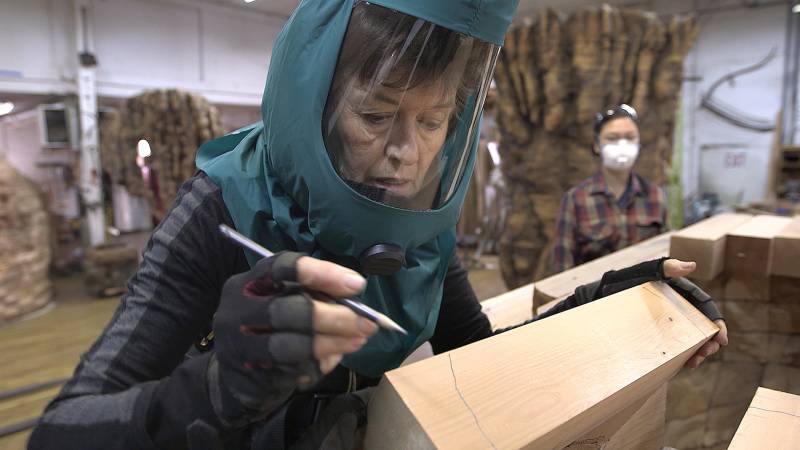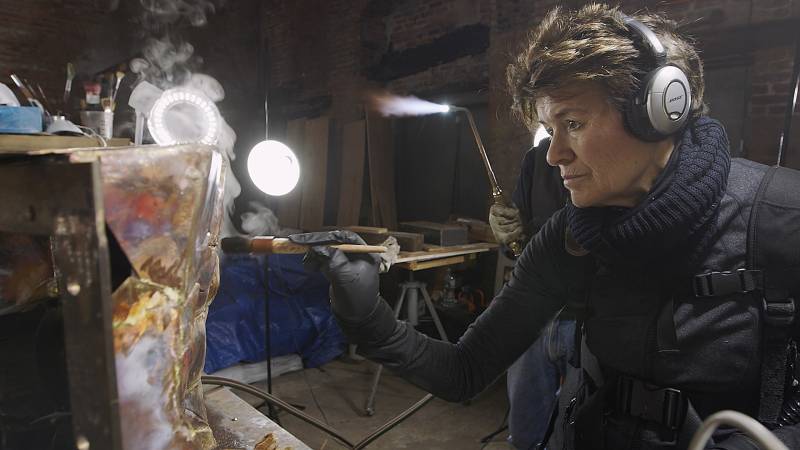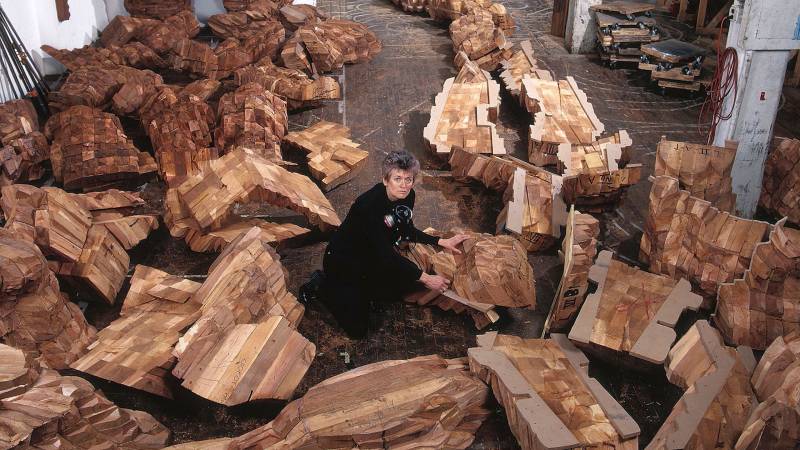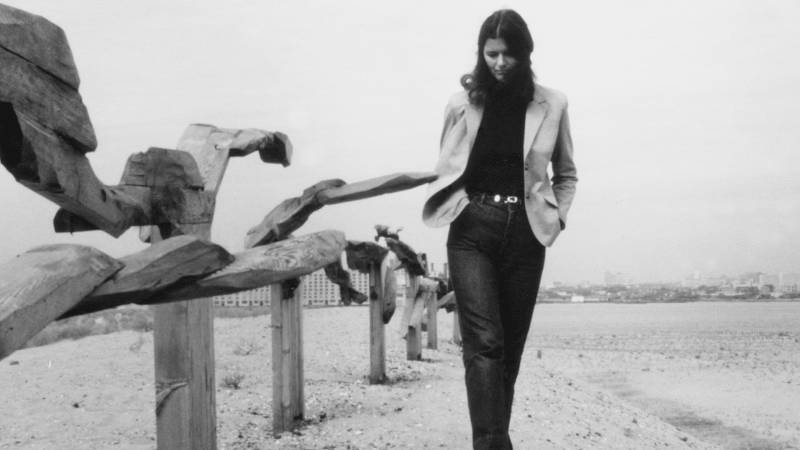The word monumental recurs throughout the new documentary Ursula von Rydingsvard: Into Her Own. Art critics, friends of the artist and casual observers reflexively use the adjective to describe the Stonehenge-sized scale of von Rydingsvard’s work. It’s a self-evident fact that her public sculptures meet dinosaurs at eye-level. But Daniel Traub, director of the film, suggests that people are responding to their immensity as well as something else. Speaking in a phone interview, Traub says that a work of art that fits in the palm of your hand can also be monumental. “But it has to resonate symbolically and with something that’s very human,” he says. “It transcends the moment.”
Von Rydingsvard, who was born in 1942, displays that sense of timelessness in massive works like Czara z Bąbelkami, Scientia and Uroda. In Traub’s biographical film about the artist and her practice, he concentrates his attention on the fabrication of Uroda, finished in 2015. The director filmed von Rydingsvard in the studio for over two years; the entire documentary took five years to complete.
Traub wanted to showcase both her work and her personal story. “It took a long time to find that balance,” he explains.
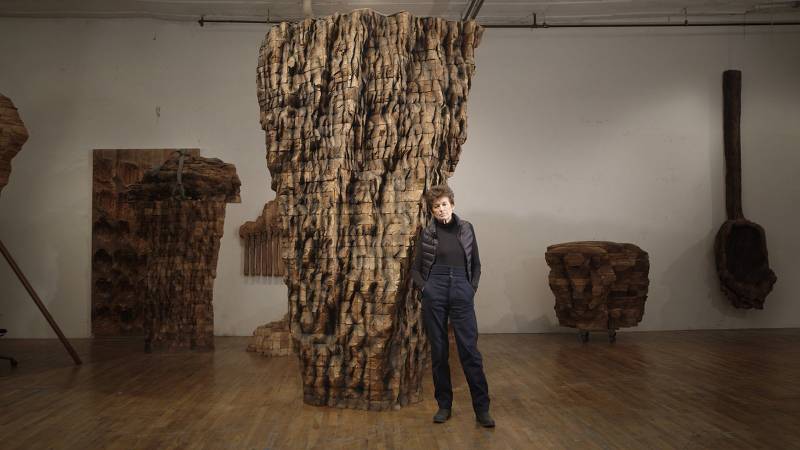
From various angles, Uroda—an inverted tower of copper, steel and bronze—calls to mind totemic images from ancient civilizations. The work feels familiar to our reptile brains even if we’ve never seen it before. It resembles a calcified fossil that’s been extracted from deep inside the churning, magmatic earth. If you’re going to apply meaning to a giant abstraction like Uroda, your subjectivity should be kept open-ended and permeable. It’s not merely coded with vegetal traces, or mineral and animal ones, and ecological associations, but all of the above.
Into Her Own, though, isn’t an esoteric film that’s concerned with excavating hidden meanings. Traub focuses on more practical matters, like her team of assistants, their hands-on process and the materials von Rydingsvard batters and shapes.
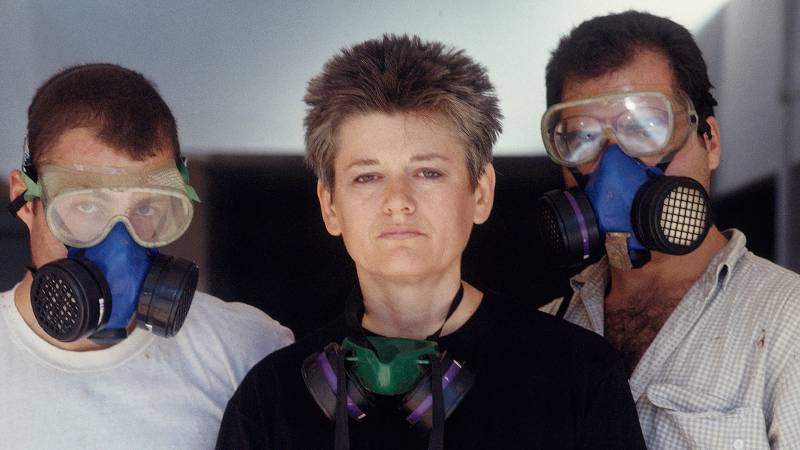
The artist’s primary material was cedar, from 1975 onwards, until she started to work on Uroda. She previously tried to incorporate other materials into her work, but cedar kept calling her back, an affinity the documentary links to personal history.
